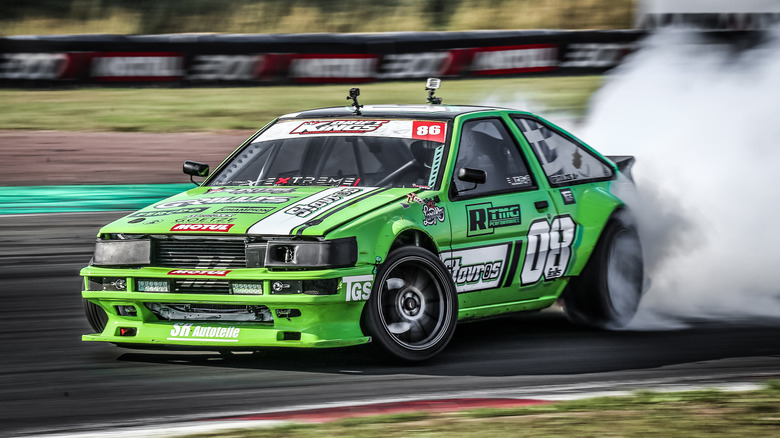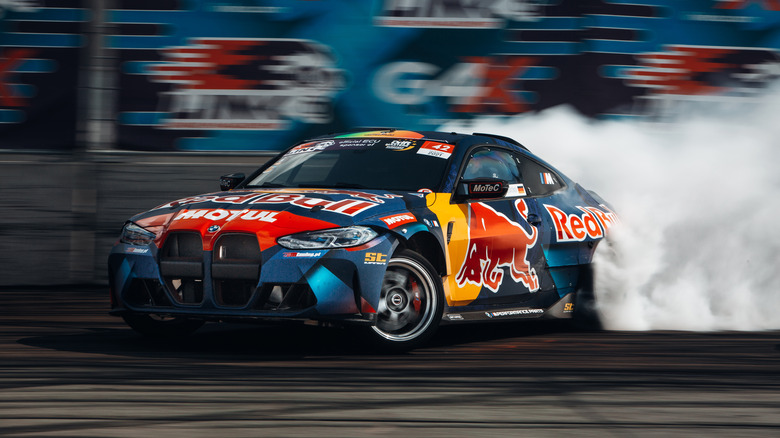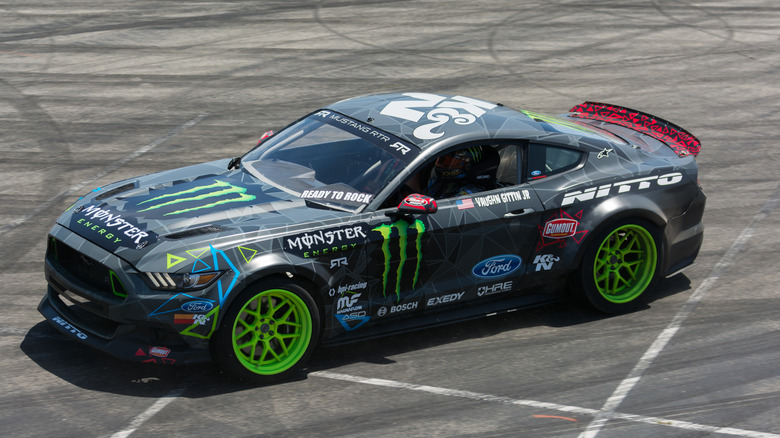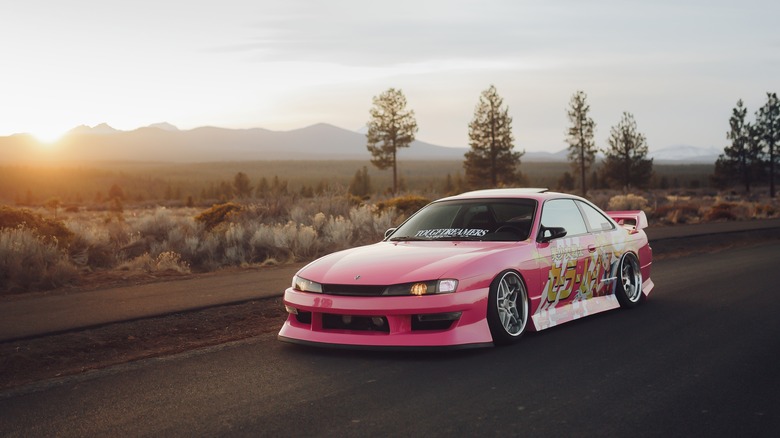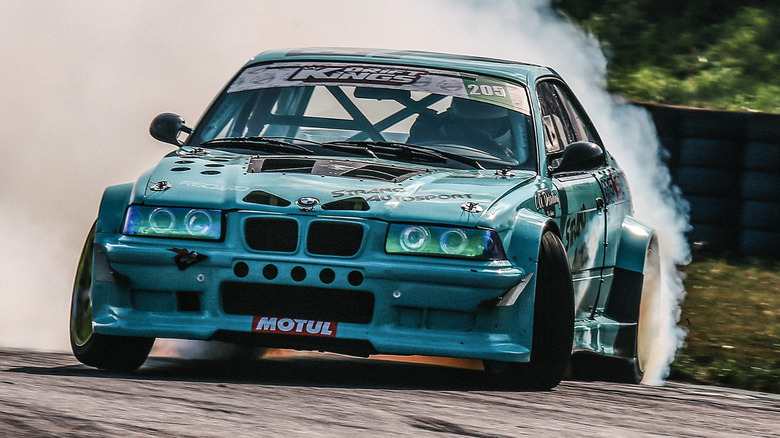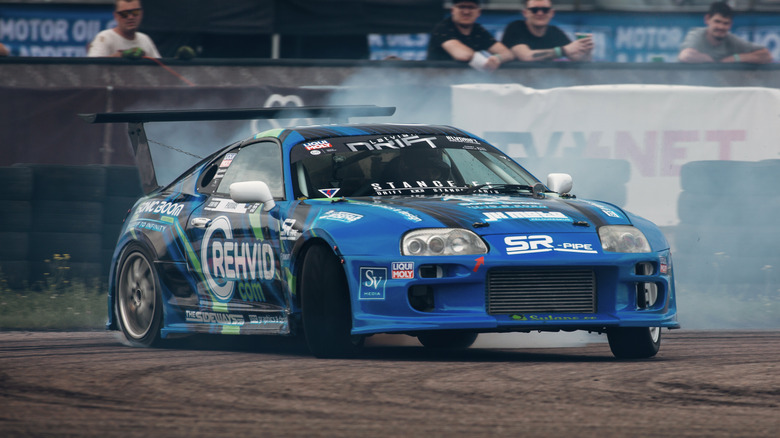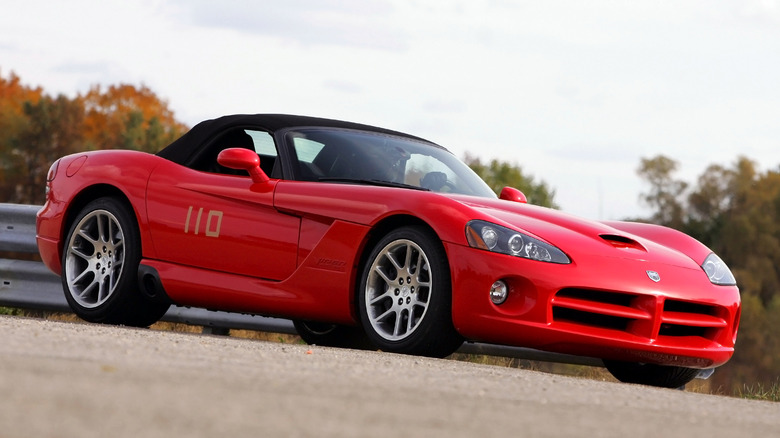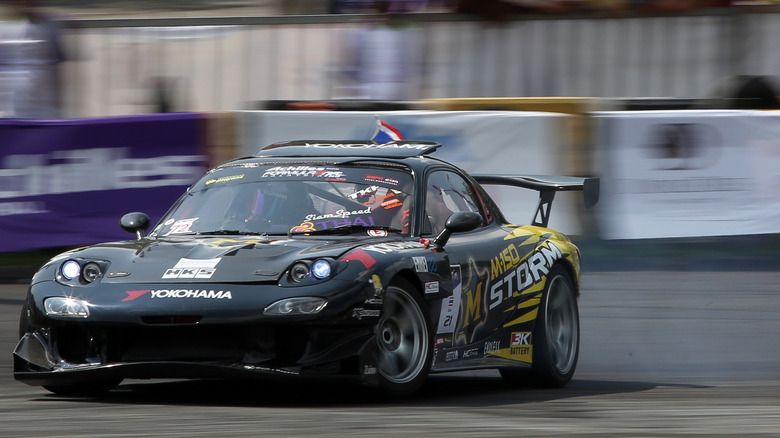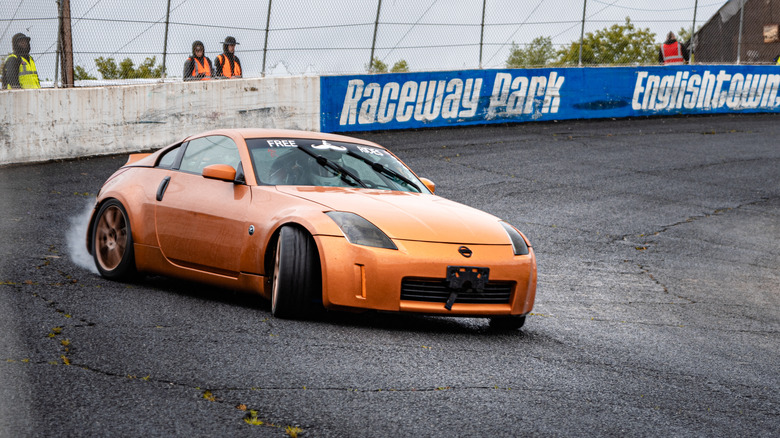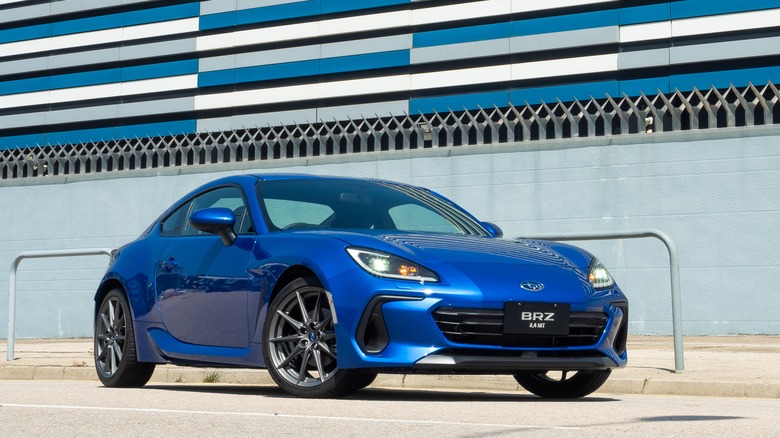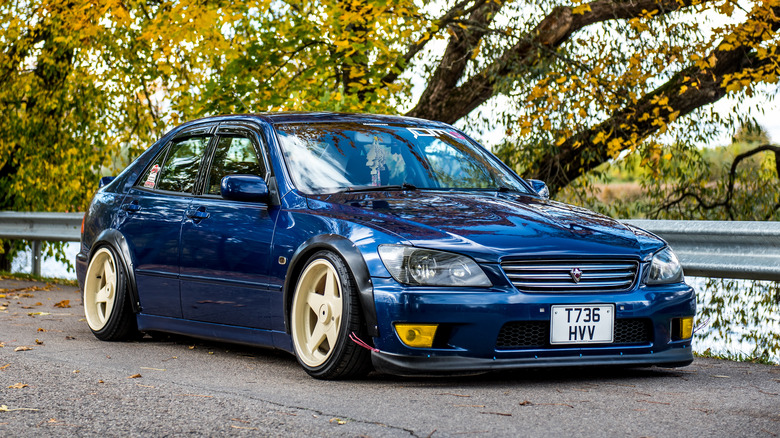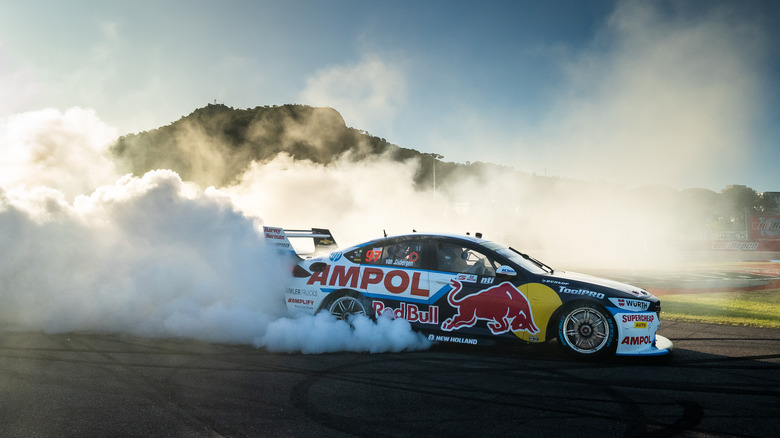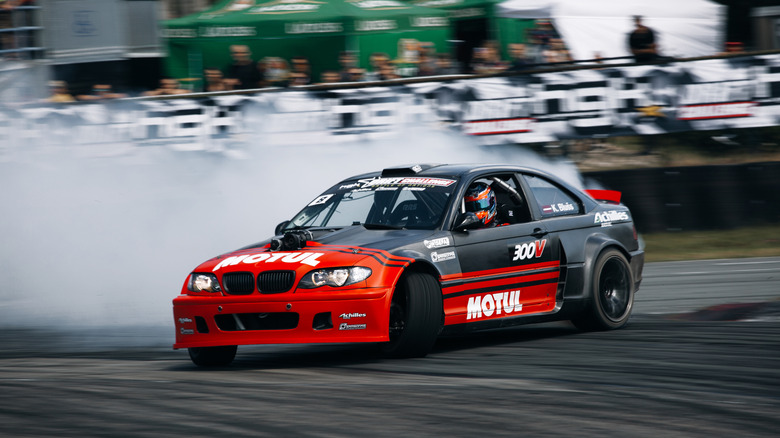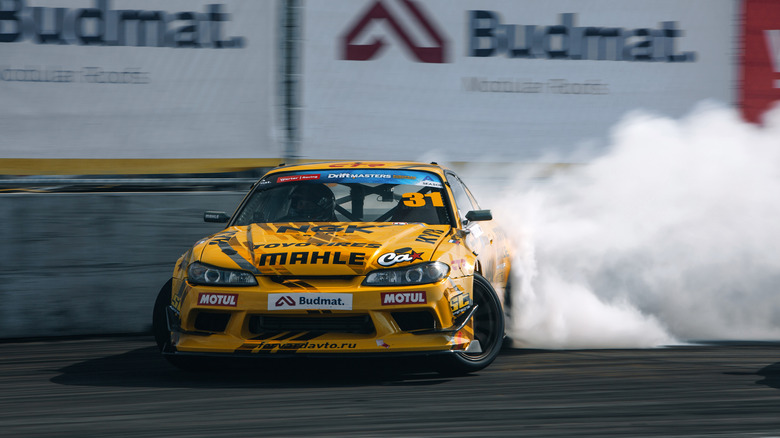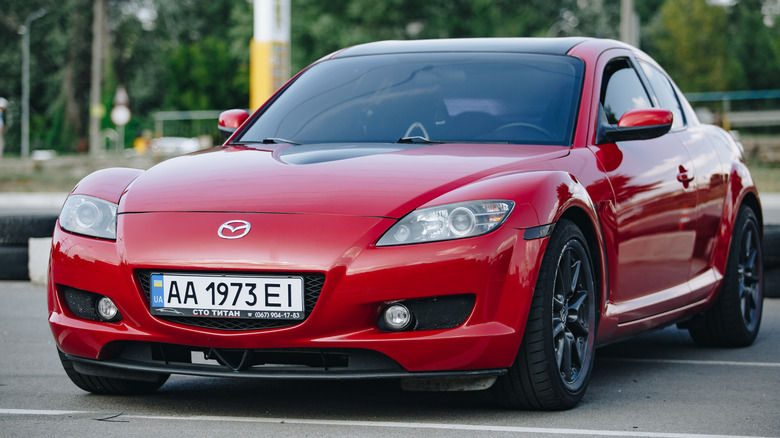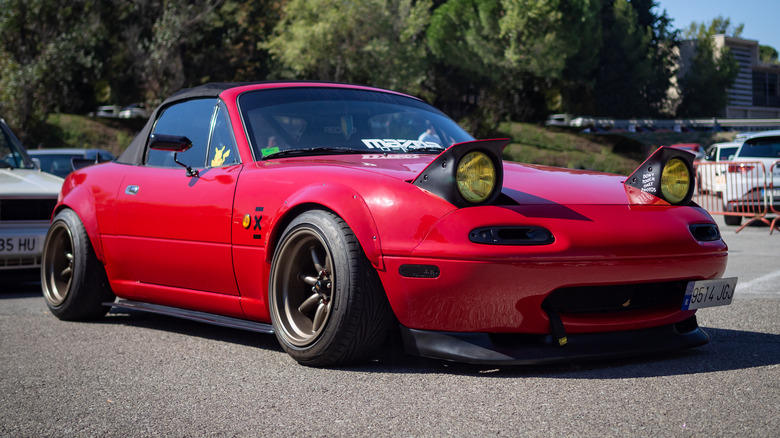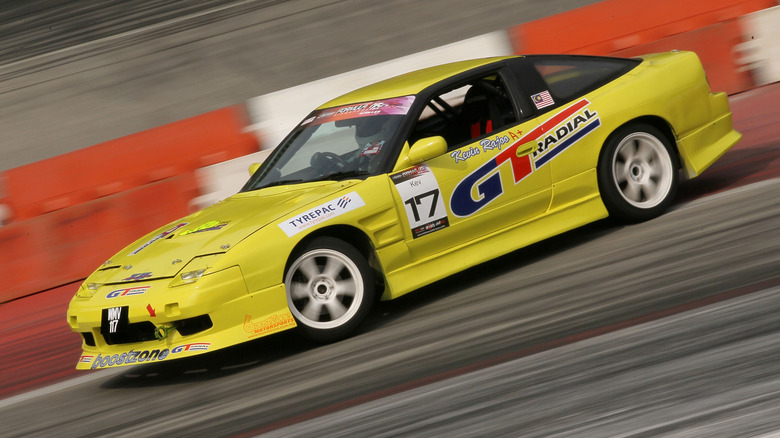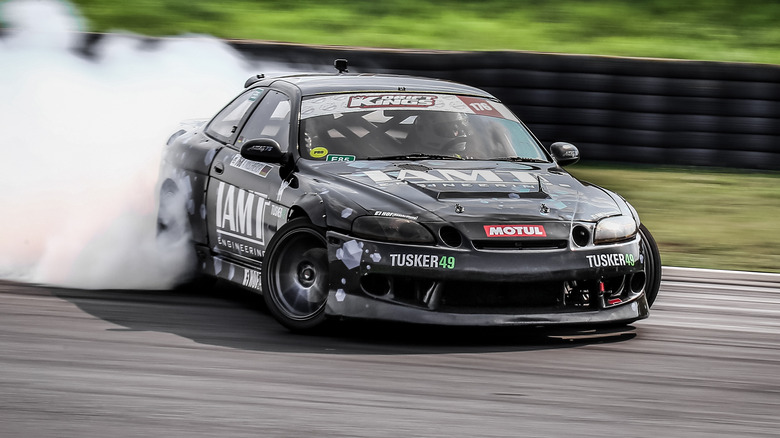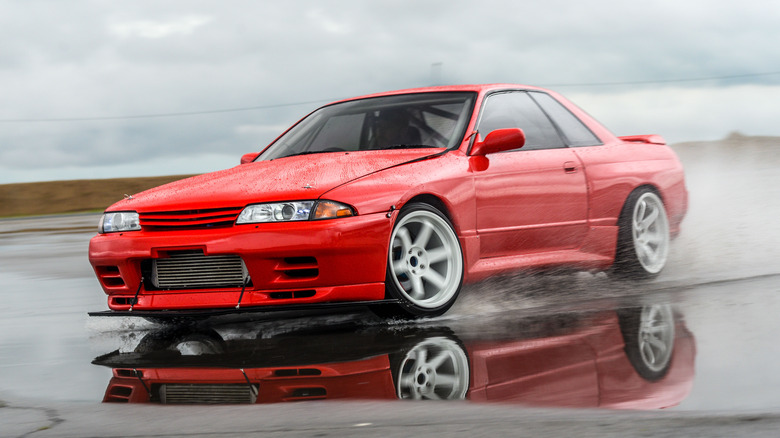18 Best Drift Cars Ever Made
Drifting as a motorsport discipline is a fairly new idea, originating in the mountain roads of Japan in the early 1990s. It has quickly become a very popular spectacle around the globe, with competitive series like the US-based Formula Drift and Japan-based D1GP providing outlets for drifters to show off their skills. Any car can technically be used for drifting, as long as the driver is able to initiate oversteer, but some cars are naturally more set up for the sport than others.
An excellent drift car will usually have a low center of gravity, be rear-wheel drive, and be easy to modify and upgrade. Plus, it'll usually be affordable, as drifters aren't too keen on paying huge sums for a car that's likely to end up clipping a lot of concrete barriers throughout its sporting life. It might be relatively new as a discipline, but drifting already has a huge enthusiast community across the globe, and it shows no sign of stopping. In fact, according to Red Bull, it's the fastest-growing motorsport in the world right now.
What is drifting?
The basic premise of drifting is initiating controlled oversteer, then delicately balancing the amount of countersteering with throttle control to ensure the car stays appropriately sideways throughout a corner. The discipline shot to international fame through cult classic manga and anime series like "Initial D," and later through the "Fast and Furious" movie franchise. In particular, "The Fast and The Furious: Tokyo Drift" was instrumental in introducing the art of drifting to a mainstream audience, as (spoiler alert) the film's hero character, Sean, uses his drift skills to defeat his mafia boss nemesis Takashi in a tight race down a winding mountain road.
Back in the real world, drifting has become a fiercely contested motorsport, with major competition series being run everywhere from New Zealand to Ireland. Competitions add extra layers of difficulty to the art of going sideways by scoring how well drivers drift in close proximity to each other, and how well the driver can link multiple drifts together, among other things. The more precise a driver can be in controlling their car's movements, the higher the score. Of course, for every meticulously measured pro-level competition, there are plenty more grassroots events that exist simply for attendees to have as much fun as possible, regardless of their skill level. The cars listed here are among the community's favorites and can be seen everywhere from grassroots events right up to national competitions.
Ford Mustang RTR
The Ford Mustang is one of the world's best-selling sports cars, and its readily-available nature, combined with its extensive aftermarket, make it an excellent candidate for a drift car. Three Mustangs are currently running in the top-flight 2022 Formula Drift championship. Two of those feature modifications from RTR, an aftermarket parts maker founded by drifter Vaughn Gittin Jr. shortly after releasing its first Mustang project in 2009, RTR entered into a partnership with Ford itself, effectively giving factory backing to this startup drift company.
This was one of the first times that an automaker had expressly given its support to producing drift cars, and this continued support from Ford makes the Mustang a recurring favorite for high-level drift competitions today. RTR-modified cars can also be ordered from select Ford dealerships, and the company has now expanded to produce performance variants of several other models in the Ford range. But, the Mustang remains RTR's most high-profile model and the car that gave the company its start in the industry.
Nissan Silvia/240SX (S14)
Although it was the S13 that first thrust the Silvia/240SX range into the spotlight as a drifter, the S14 has now become the most popular generation with buyers looking for a drift-ready S-chassis. Data from Hagerty insurance shows that 64% of insurance quotes for the S14 were flagged as modified, as opposed to 52% for the S13. So, it's safe to say that at least half the S14s remaining on the road in the US are modified in some way, with many of those likely to be set up as drift cars. The S14 was lowered, widened, and featured better weight distribution than the previous-gen car, according to Hagerty. The other big selling point of the car is its engine bay, which is roomy enough to fit a number of engine swaps, with LS swaps being common in the US.
S14s were once very affordable, but their popularity among drifters has made them subject to what's often called, "the drift tax." As more examples get modified, raced, and often crashed, it gets harder to find stock examples in good condition. This pushes prices up, to the point where enthusiasts on a tight budget are now often priced out of the market altogether. Hagerty reports that an unmodified, well-preserved S14 can now command a premium of $20,000, a far cry from the four-digit price tags that the same cars would have sold for just a few years ago.
BMW M3 (E36)
The E36 is currently the cheapest generation of the BMW M3 on the used market, and its affordability has made it an increasingly popular option for drifters in recent years. With enough technical know-how, the car's stock 3.0L straight-six engine can be turbocharged, saving the need for an engine swap. However, those in search of maximum horsepower can swap in an LS engine without too much hassle. The M3's well-balanced chassis and handling prowess make it a great driver's car, and as a result, a great base from which to build a pro-spec drift car.
Like many of the cars here, the E36 is supported by a large aftermarket, which makes finding upgrades as easy as clicking "Buy It Now" on a webstore and waiting for said upgrade to be delivered straight to the door. Its rising popularity with the modding community is one factor contributing to the E36's rising price, although for now, examples can still be found for comfortably under the $20,000 mark. How much longer it will stay that way remains to be seen.
Toyota Supra MkIV
On the subject of rising prices, few cars have seen their value skyrocket quite as much as the MkIV Toyota Supra over the past decade. Low-mileage examples of the car can now sell for a quarter of a million dollars, making them practically unobtainable for anyone looking to modify one. However, there are plenty of examples out there that were already converted to drift cars long before the Supra became a collector's item. One such example is pro drifter Dan Burkett's Formula Drift car, which racked up over 230,000 miles of regular road use before being converted for competition. The Supra's 2JZ straight-six engine is famed for its ability to crank out huge horsepower figures with minimal modification, and Burkett's car makes 957 horsepower to the wheels.
Despite their reputation as one of the most well-known JDM cars, Supras aren't actually that common in Japan, and the ones that are modified there are mostly street builds. Their reputation as drift cars was earned mainly in the US and Europe, as Western drifters saw bags of potential in the car's highly-tunable 2JZ, creating builds that could make well over 1,000 horsepower. Ever since it was immortalized in the "Fast and Furious" movie franchise, the A80 Supra has remained one of the most sought-after JDM cars, and its popularity doesn't seem likely to wane anytime soon.
Dodge Viper
The Dodge Viper isn't the easiest car to keep under control even in stock form, but nevertheless, a few brave souls have added huge turbochargers to more than double the car's stock power. The result is a car that's unlike anything else on the pro drift circuit. Dean Kearney's #43 Formula Drift car is a great example, having been through several build generations and making over 1,350 horsepower in its current form. This huge horsepower figure is made possible by fitting two turbochargers to the 8.3L V10 engine, then upgrading the camshafts, pistons, rods, and a host of other components to cope with the increased power.
It might not be the most conventional of drift cars, but it's certainly an effective one, as its success in top-flight competitions has proved. Swedish driver Samuel Hubinette won the inaugural 2004 season of the Formula Drift championship in one, then two years later clinched the title a second time in the same car. The upfront cost of buying a Viper has kept them out of the hands of most grassroots drivers, but they have remained a favorite among professional drifters since the earliest days of the sport in America.
Mazda RX-7 FD3S
The Mazda RX-7 is the best-selling rotary car of all time by a considerable margin, with over 800,000 units sold between 1978 and 2002. The FD generation was the ultimate iteration of the car, with a suite of technology, powertrain, and styling improvements over its predecessor. The RX-7 was immortalized as a drift car in "The Fast and The Furious: Tokyo Drift," with the movie car featuring a distinctive Veilside body kit. The kit has remained Veilside's most iconic product to date, and is still available to purchase, according to Motor Authority. However, it's far from the only kit available for the RX-7, as nearly every major parts maker has designed one, from local Japanese legends like Re Amemiya to new-school brands like Rocket Bunny.
The RX-7's potent 13B rotary engine makes it a natural candidate for a drifter, and its visceral soundtrack at high revs adds to its appeal. However, used prices for the car are starting to become out of reach of grassroots drifters, in part due to the "drift tax," and in part due to the car's high maintenance costs, which sent many examples to the scrapyard before they became collector's items.
Nissan 350Z
Launched in 2002, the Nissan 350Z heralded the return of the Z line of sports cars after several years on hiatus. The car went back to the Z line's roots, ditching the cutting-edge tech and complicated systems of its predecessor, the 300ZX, for a simple front-engined V6, rear-wheel-drive layout. It was a formula that resonated well with enthusiasts, and the car sold over 165,000 units in the US in the seven years it was on sale. That popularity has meant that there are lots of examples for sale on the used market, which has kept prices low and meant that the 350Z is one of the best-value Japanese sports cars out there at the moment.
It might be cheap, but the 350Z has the potential to compete at the top level of drifting and is one of the most common cars in Formula Drift. The aftermarket for the car is huge, giving owners plenty of options during the build process. The car's stock V6 is ripe for upgrading, but a 2JZ can also be easily swapped in for maximum horsepower figures.
Subaru BRZ
The Subaru BRZ and its twin, the Toyota GT86, have now been on sale for 10 years, and in that time they've established themselves as two of the best cheap sports cars on the market. The second generation of the BRZ went on sale in 2022, with a number of improvements over its predecessor, including a revised chassis and a new, more powerful engine. It now makes 228 horsepower in stock form, but with such a huge aftermarket for the car, it can easily be modified to make significantly more. One of the biggest selling points of the BRZ is its price: It comes in at a fraction under $30,000 in base-spec form.
The car's top-tier handling, sizable aftermarket, and affordable starting price all combine to make a very attractive package for drifters looking for a new project car. It's common to see BRZs at grassroots competitions or as drift-ready street builds, but they can also be found at the highest levels of the sport.
Lexus IS300
It might seem like an unusual choice for a drift car, but the Lexus IS300 ticks all the right boxes for shredding tires on the track. The rear-wheel-drive sedan hides a naturally-aspirated 2JZ-GE engine under the hood, the same engine that's found in the MkIV Toyota Supra. It's also very affordable, with examples in good condition selling for as little as $10,000. Anyone who wants to upgrade their car's performance and looks can do so through the car's extensive aftermarket, and there are plenty of engine swap options, with 1JZs and 1UZs being common swaps.
The IS300 was originally designed to compete with German rivals like the BMW 3 Series, but its class-leading reliability and tuning potential gave it a unique appeal that sets it apart from its competition. It's also now one of the cheapest ways for buyers to get their hands on a 2JZ engine, as prices for the Supra have shot through the roof in recent years, putting them out of reach for many drivers. With the IS300, buyers get the performance potential of the 2JZ, albeit in non-turbo form, but in the shell of a car that can comfortably seat four adults. A unique combination for sure, and one that's very well suited to drivers on a tighter budget.
Holden Commodore
The name might not be big in America, but the Holden Commodore holds a special place in the hearts of many Australian car fans. The Commodore has been one of the most popular models Down Under for decades, and it held the title of Australia's best-selling car for fourteen consecutive years between 1996 and 2010. Top-spec versions of the car are powered by GM's mod-ready LS V8 engine, and the car's traditional rear-wheel drive, and manual transmission layout make it the perfect candidate for a drift car. The Holden remained a local drift favorite for years but achieved some international recognition when Josh Robinson brought a Commodore Ute to the Formula Drift series in 2017.
Unfortunately, 2017 was also the same year that Commodore production was stopped in Australia, as rising production costs and dwindling sales had made the car unprofitable. Between 2017 and 2019, a rebadged Opel Insignia was sold under the Commodore name, but its non-Aussie roots made it deeply unpopular. 9News reports that the car was axed by 2020. Still, it's not all bad news, as the car's long-standing popularity among Australians means that there are still plenty of examples floating about on the domestic used market. Americans can also buy their own piece of drift-ready Aussie muscle, as the Commodore was rebadged and sold as the Chevrolet SS between 2014 and 2017.
BMW M3 (E46)
Much like the previous generation E36, the E46 M3 has now depreciated to the point of being affordable for grassroots enthusiasts. And, as it has become cheaper, the number of drift E46 builds has steadily increased. The car's S54 engine is powerful even in stock form, but it's capable of handling horsepower increases that can reach triple its original output. One competition car developed by Essa Motorsports for Formula Drift made 1,015 wheel horsepower with surprisingly few modifications.
However, it's not uncommon for builders to engine swap their E46s, with 2JZ swaps and LS swaps being the top choices. One drift build even features the S85 V10 engine from the M5 and M6, which seems like an odd choice considering that the engine was famed for unreliability. Even so, it just demonstrates the number of options available to E46 owners. As used examples keep getting cheaper, it's likely that even more unusual builds will be shown off soon.
Nissan Silvia S15 Spec-R
The last car to bear the distinguished Silvia nameplate was the S15, which came in two flavors: Spec-S and Spec-R. The Spec-R was the more powerful of the two, featuring a turbocharged SR20DET engine that made 247 horsepower as opposed to the Spec-S' naturally-aspirated 163 horsepower SR20DE. So, the Spec-R became the version to get for drifters. The success of the S13 and S14 Silvia as drift cars ensured that the S15 was highly sought after even from the factory. This popularity has continued on to today, and the S15 is now one of several JDM cars succumbing to the "drift tax."
Prices will no doubt increase even further when the car is no longer subject to the US 25-year import rule, which currently prevents Americans from legally importing one. The first S15s rolled off the production line in 1999, so will be available to import from 2024. The Silvia is currently the most popular car among pro drivers in the Japanese D1GP Championship, with 10 drivers running the car in the 2022 season.
Mazda RX-8
Mazda's successor to the lauded RX-7 FD3S was the RX-8, and to say that the car had big shoes to fill is an understatement. The RX-7's twin-turbo rotary and sharp handling had made it into a rival to the likes of the Porsche 911, but there were concerns that the car was getting too complicated and costly. So, for the RX-8, Mazda decided to take things back to basics, giving it a naturally-aspirated version of the Wankel rotary engine. This meant the car felt slower in the real world than its predecessor, even though on paper it had similar horsepower figures, according to Top Gear. Nevertheless, RX-8 sales were strong for the first year but tailed off shortly after amid concerns about reliability issues.
These concerns have remained among JDM fans to the present day, keeping prices low and making it an excellent budget drift car. With a 9,000 rpm redline, a decent aftermarket and a number of high-profile drift builds to take inspiration from, the RX-8 makes a great choice despite its mixed reputation. Anyone who still needs convincing should take a look at Mad Mike Whiddett's "BADBUL" RX-8, which makes 800 horsepower from its original triple-rotor engine. It has competed in Formula Drift, the New Zealand Drift Series, Red Bull Drift Shifters, and a number of other high-profile events. The RX-8 might not be as popular as the RX-7, but it's just as capable as a drift car.
Toyota Corolla AE86
The Corolla AE86 already had a reputation as a great drift car throughout the sport's earliest days, but what really catapulted it to stardom was its prominent role in the cult classic Japanese manga "Initial D." The comic series featured a young hero, Takumi Fujiwara, who honed his drifting skills on Japanese mountain roads while working as a delivery driver. He drove an AE86, and as the original manga and spin-off anime became international cult hits, so did the car. Keiichi Tsuchiya, a Japanese racing driver nicknamed "Drift King," provided technical advice for the series, and it's been speculated that the main character is based off Tsuchiya himself, as he famously competed on Japan's mountain passes in an AE86 in his early days.
So, the car is not only an anime star, but also one of the earliest known drift cars. It's no surprise, then, to find out that values of the AE86 are on a one-way trend upwards. The car is now incredibly difficult to find in original, unmodified condition, and the few that do come up for sale can sell for more than their original list price. Ironically, this popularity has put them out of reach of drifters in many markets around the world, and now grassroots drivers have turned to a new generation of drift-ready cars to get their tire-shredding fix.
Mazda MX-5 Miata
"The answer is always Miata." It's a common response whenever some well-meaning individual posts on a forum looking for car advice, but there's a good reason why the Miata continues to be one of the most recommended grassroots enthusiast cars for any motorsport, not just drift. It's affordable, with plenty of cheap used examples on the market at any given time. It's also easy to modify, thanks to the huge aftermarket that covers every generation of the car. But most importantly, it's great fun to drive, and makes for a surprisingly competitive drift car in the right hands.
Its power output might be bested by most modern econoboxes, but the light weight and rear-wheel drive layout of the Miata means it doesn't need many ponies to go sideways. Even so, the car's popularity means that all sorts of weird and wonderful builds have emerged over the years, with engine swaps ranging from Cummins diesels to 525-horsepower LS3 V8 swaps. Whether it's left mostly stock or built into a tire-shredding monster, it's hard to argue with the value that the Miata offers, and that's kept generations of drifters coming back to it across all levels of the sport.
Nissan 180SX/240SX (S13)
Known as the 180SX in Japan and the 240SX in North America, the sister car to the S13 Silvia has long been a drift favorite both in Japan and around the world. The 180SX was the first generation of the S-chassis line to really establish itself as a perfect car for drifting, with the classic front-engine, rear-wheel drive formula and an engine ripe for upgrades. In particular, the SR20DET available in JDM cars was the pick of the bunch — USDM cars had to make do with the KA24E at launch, and even the upgraded version never quite compared.
The S13's popularity as a drift car saw a broad aftermarket quickly spring up around it, leading to increasingly powerful builds and a wider array of kits available for drivers to add their own personal touch to their cars. Like many of the most sought-after drift cars, they're no longer as cheap as they once were, but their popularity at launch has meant that there's still plenty of affordable examples on the market for now.
Toyota Soarer/Lexus SC300
The Japanese-market Toyota Soarer, sold as the Lexus SC300 or SC400 in North America, is at first glance just another '90s sports coupe. However, under the hood of the SC300 was a naturally aspirated version of Toyota's 2JZ — the same engine as the MkIV Supra. While the twin-turbo version, the 2JZ-GTE, was never offered in either the Soarer or the SC300, the JDM Soarer was also available with a 1JZ-GTE. The only real difference between the famous Supra engine and the Soarer's was the slightly smaller displacement of the 1JZ, but the huge tuning potential remained the same.
The 1JZ can be modified to produce more than double its stock power output with just a few aftermarket parts, making it an ideal candidate for a drift missile. The car is relatively heavy when stock, and so needs to be stripped out for optimal sideways action, but many drift enthusiasts have done exactly that over the years. Supras have now risen in price way beyond what the average enthusiast can afford, but anyone who can find a nicely sorted Soarer will have an equally bulletproof engine at their disposal for a fraction of the cost.
Nissan Skyline R32
While the R32 GT-R was making waves in the racing and tuning worlds, lesser versions of the legendary Nissan Skyline remained popular drift cars in Japan for years. The GT-R is a less-than-ideal candidate for drift car conversion for several reasons: Its status as one of the most sought-after JDM cars of its era makes it too expensive for many enthusiasts to purchase at all, and there's also the issue of the 4WD system, which needs to be disabled to drift. Not to mention, fixing a GT-R if something breaks will require considerably deeper pockets than fixing a lesser Skyline.
Buying an R32 GTS-t or GTS solves all of these problems, and the RB engine under the hood still has plenty of potential for upgrading, even if it's never going to live up to the crazy horsepower figures of an RB26DETT. It is annoyingly common to see lower-spec Skylines with GT-R badges, but that distracts from the real appeal of the likes of the GTS-t — they're affordable enough to buy with plenty of tuning potential, and probably won't bankrupt their owners if they clip a wall or blow an engine while drifting.
